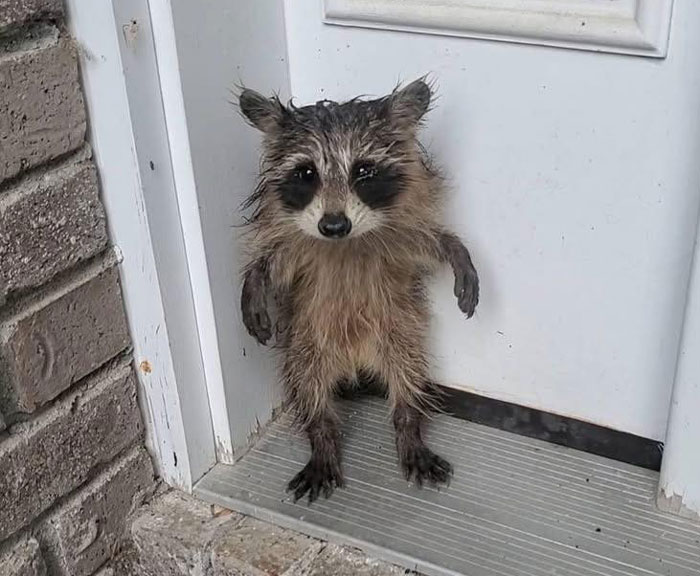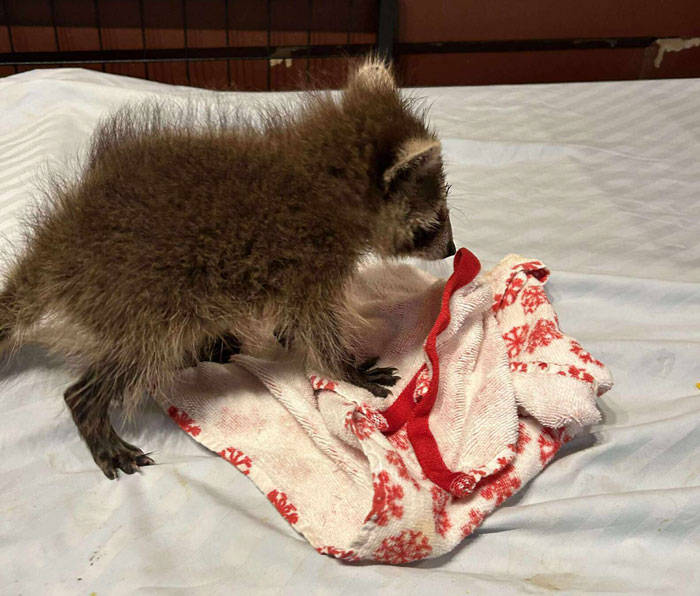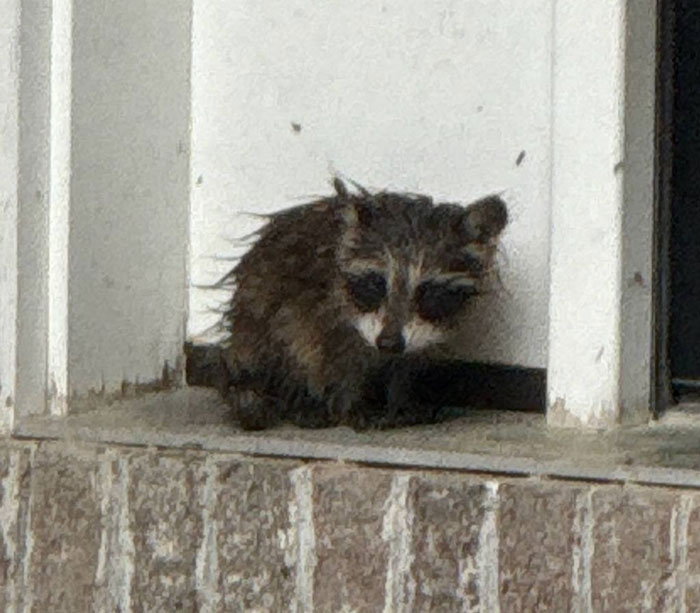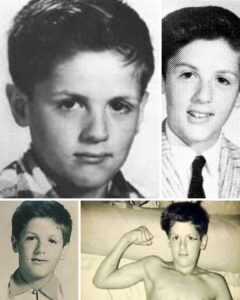Sometimes animals have a way of reminding us how connected we are to the wild — even from the comfort of our own doorsteps. One rainy morning in Belchertown, Massachusetts, that connection became heartbreakingly real when a soaked, shivering baby raccoon appeared outside a home, desperate for warmth. What happened next turned into a story of instinct, compassion, and the kind of everyday heroism that doesn’t make headlines but should.
A Frigid Morning and a Tiny Visitor
The homeowner opened their front door expecting a quiet morning. Instead, they found a trembling baby raccoon, barely two months old, curled against the doorstep. The little creature was drenched from a night of relentless rain, its fur clinging to its body, eyes blinking weakly. For anyone who loves wildlife, the scene would’ve been impossible to ignore.
Without hesitation, the homeowner acted. They wrapped the tiny raccoon in a warm towel and contacted Belchertown Animal Control for immediate help. Officer Sarah Byrnes arrived shortly after, confirming that the baby was suffering from hypothermia and was far too young to be on his own.
“He was drenched and looked terrified,” Byrnes said. “He wouldn’t have survived much longer out there.”

Related Reading: Man Loses 360 Pounds Naturally — Internet Rallies to Support His Next Step
From Doorstep to Rescue Center
Officer Byrnes searched nearby woods hoping to find the raccoon’s mother, but there was no sign of her. Realizing the baby was truly alone, she reached out to the Leyden Center for Wildlife Rehabilitation — a sanctuary known for helping orphaned animals across Massachusetts.
Founder Amelie Dricut-Ziter didn’t hesitate to take the raccoon in. “He was cold, scared, and hungry, but otherwise in surprisingly good shape,” she said. “We got him warm, hydrated, and he started eating right away.”
The team quickly named the little survivor Bub. For now, he’s in quarantine, being monitored around the clock. “He’s eating, drinking, and being a raccoon again,” Dricut-Ziter added with a smile.
How Wildlife Rescue Centers Heal the Forgotten
The Leyden Center’s work goes far beyond feeding and sheltering. It’s about giving injured or orphaned wildlife the second chance they deserve. From raccoons and foxes to owls and deer, every rescued animal goes through a careful process of medical evaluation, rehabilitation, and eventual release.
Young raccoons like Bub require weeks — sometimes months — of care before they can fend for themselves. During that time, volunteers simulate natural conditions to teach them how to forage and stay cautious of humans. The ultimate goal is always the same: a safe return to nature.
Lessons in Compassion and Caution
Dricut-Ziter often reminds the public that helping wild animals isn’t as simple as picking them up. “If the animal isn’t in immediate danger, call a licensed wildlife rehabilitator first,” she said. “If you must move it, wear gloves, use a towel, and never try to feed it. Even the cutest baby raccoon can carry diseases like rabies.”
That balance — between compassion and caution — is at the heart of responsible wildlife rescue. Every year, hundreds of well-meaning people unknowingly endanger themselves or young animals by intervening without guidance. Bub’s story shows how to do it right: empathy paired with expert help.
A Symbol of Resilience
Bub isn’t just another rescue case; he’s a symbol of how fragile yet resilient nature can be. One night of rain nearly took his life, but a stranger’s kindness — and a quick call for help — changed everything. Soon, when Bub grows stronger and learns to survive on his own, he’ll join nearly two dozen other young raccoons at the Leyden Center ready to return to the wild.
When that day comes, the team will release them quietly, without fanfare, back into the forests where they belong. Their reward isn’t recognition — it’s the sight of an animal running free again, unafraid and unbroken.
You Might Like: The Hidden Meaning Behind Princess Diana’s Cannes Gown — A Heartfelt Farewell to Grace Kelly
Why Stories Like Bub’s Matter
Online, people are quick to scroll past another post about politics or celebrity gossip. But when a story like Bub’s surfaces, it grabs attention for the right reasons. It reminds readers that the world is still full of quiet acts of care — the kind that don’t trend but matter deeply.
From an SEO standpoint, stories involving animals and wildlife rescue consistently attract high engagement. Readers stay longer, share more, and return for updates. For publishers, that means higher RPM and sustainable audience growth; for readers, it means rediscovering empathy in a world that often forgets it.

A Ripple Effect of Goodness
Every wildlife rescue has a ripple effect. The homeowner’s decision to act responsibly didn’t just save Bub — it also educated thousands of people who read his story online. It showed that you don’t have to be an expert or wear a uniform to make a difference. Sometimes, all it takes is one person choosing to care.
And that’s the quiet heroism at the center of this tale: one wet, frightened baby raccoon on a doorstep, and one human heart big enough to help.
The Takeaway
The next time a wild creature appears on your porch, resist the urge to panic or ignore it. Observe, protect, and reach out to professionals. With the right steps, you might just be the reason another life — like Bub’s — gets a happy ending.
Because in the grand story of nature, we’re not separate from it. We’re co-authors. And sometimes, the smallest act — a towel, a phone call, a bit of warmth — can rewrite a creature’s entire fate.


